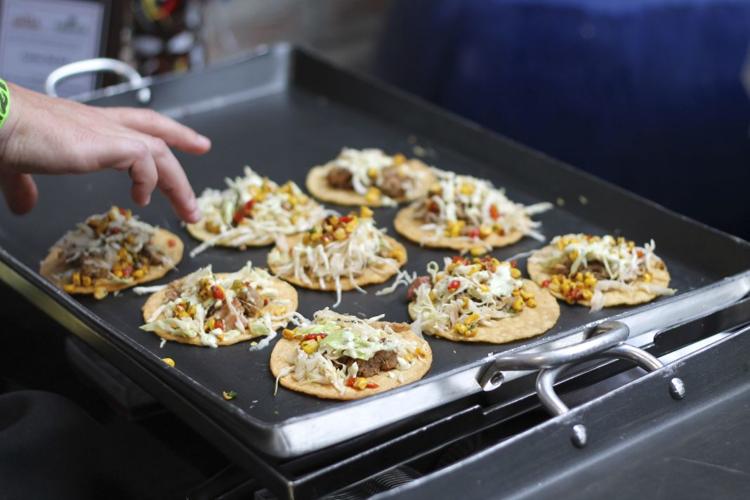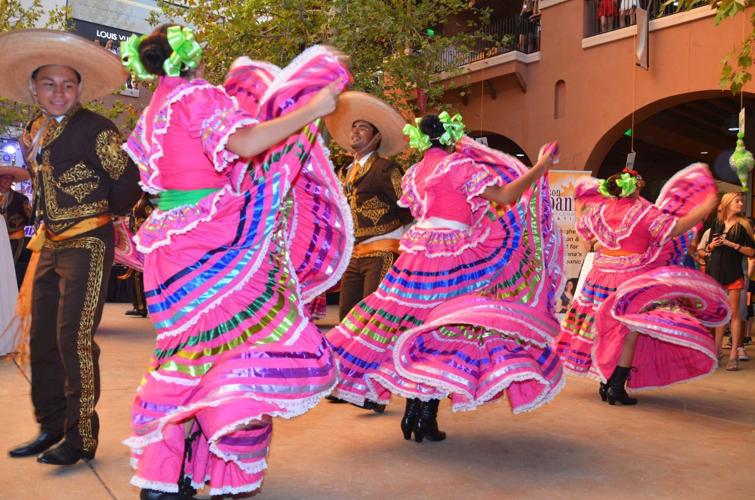You won’t need a map to help you find the best Mexican food in the United States this weekend: Just head to the JW Marriott Tucson Starr Pass Resort & Spa for The Tucson 23, a Mexican food festival celebrating the nation’s top 23 miles of Mexican cuisine as designated by Visit Tucson.
The festival will feature food and beverage samplings from more than 25 restaurants in the area centered primarily on the city of South Tucson, downtown and lower midtown, along with several outliers.
“This is the best 23 miles of Mexican food in America. There really is no other concentration of authentic, high quality Mexican food like this in the country. We want to draw attention to that fact and to what a great opportunity it is for people who live in Tucson or are visiting Tucson to experience this in one place,” said Cait Huble, communications director of the Southern Arizona Arts and Cultural Alliance, which has partnered with title sponsor Visit Tucson and JW Marriott Tucson to stage the event.
Huble said festival attendees can expect to sample regional Mexican cuisine and traditional favorites — many from family owned eateries — ranging from five pork carnitas by El Charro Café and achiote braised pork with grilled pineapple by Penca to machaca tacos and Mexican street corn by Blanco Taco & Tequila. Breweries and distilleries will also offer tastings of beer and craft spirits.
“This event helps to celebrate the real heritage food movement that is growing in Tucson. It is a great collection of restaurants. Many people might not be aware of them and we thought people could use an introduction. If people are not actually living in South Tucson, they may not have discovered them yet,” Huble said.
Overall, the event is designed to encourage the public to expand perceptions of art.
“We want people to discover amazing food and new restaurants and continue to frequent them. We want people to realize that getting out of your comfort zone is a great way to experience new things and new forms of art, which is what are all about at SAACA. We consider food a form of art,” she said.
The alliance has been on a mission to create, advance and preserve the arts and culture in Southern Arizona since its inception in 1997 as the Greater Oro Valley Arts Council.
Last year, the nonprofit collaboration of artists, individuals, businesses and government agencies produced more than 150 culturally diverse programs and events while facilitating opportunities for more than 200,000 distinctive arts experiences in Southern Arizona. Popular offerings include SAVOR Food & Wine Festival and the annual Salsa & Tequila Challenge.
The alliance is also a major proponent of arts education through numerous programs including Creative Arts Therapy, which uses a multidisciplinary arts integration method to provide healing through music, writing, visual arts and community arts.
Through a partnership formed in 2014 with the Southern Arizona VA Health Care System, it provides rehabilitation services to visually disabled veterans as well as those with traumatic brain injuries, post-traumatic stress disorder and other disabilities.
In 2015, the program served more than 5,000 veterans; services were also expanded to 2,100 seniors and residents in local assisted living and retirement facilities. Additionally, with the support of Watermark Retirement Communities, the alliance launched Music & Memory, a nonprofit that provides patients who have life-limiting illnesses with iPods loaded with personalized music playlists.
“This is an incredible program that we implemented at The Fountains at La Cholla in the dementia unit that has had amazing impact on the patients. The part of the brain that stores music is the last to succumb to memory loss. So when they hear music from their childhood that triggers old memories, it is just like flipping a switch. They become so animated and alive,” Huble said.
Huble said the alliance also works with local companies to help integrate the arts into their core business models through the Southern Arizona Business Committee for the Arts. Last year, it provided arts experiences for 2,100 employees in the workplace.
“Arts experiences in the workplace have been shown to create a happier, more unified environment and as the younger generations join the workplace, it is important to create a well-rounded environment. You want them to be satisfied: It leads to better retention, less turnover and more productivity,” Huble said.
Ultimately, the arts — in traditional and non-traditional forms — simply improve quality of life for the entire community, according to Huble.
“At the end of the day, our goal is to increase the definition of what art means. It is not just sitting at a chamber concert or going to a gallery. It is also the pinstripe on a classic car or chalk art or culinary art. We are broadening the definition for each individual,” she said.





